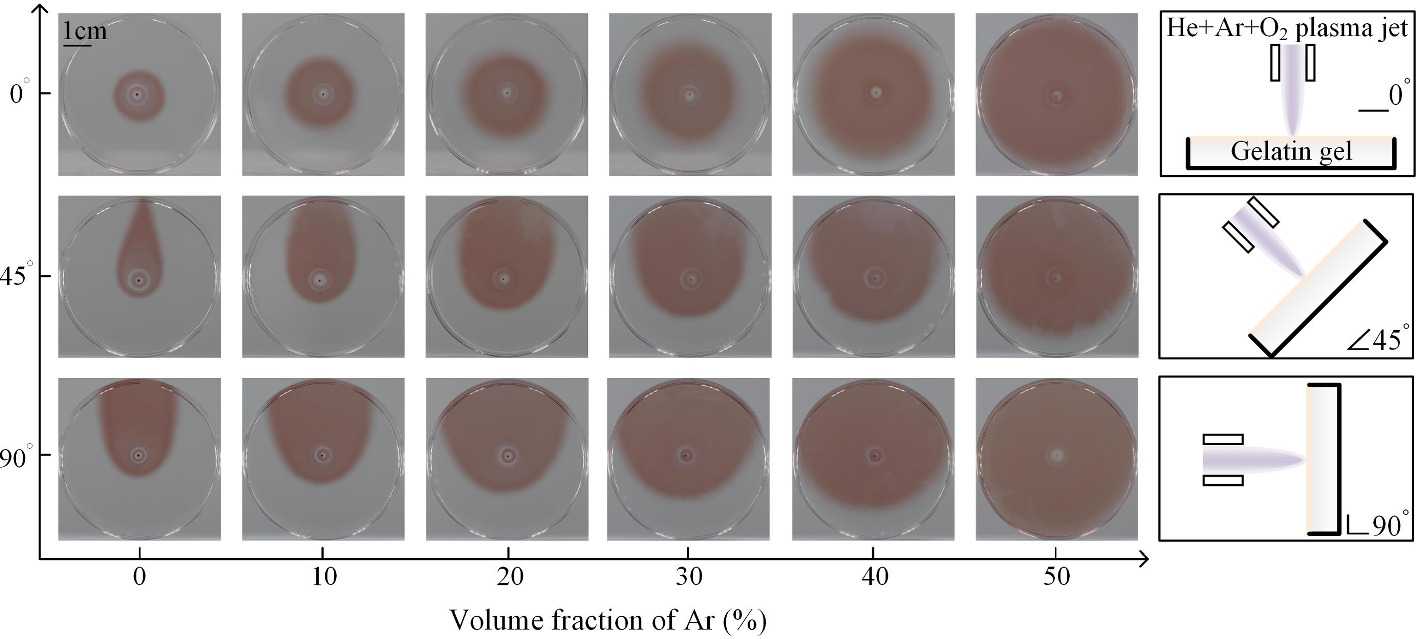https://doi.org/10.1140/epjd/s10053-024-00882-y
Regular Article - Plasma Physics
Discharge characteristics and reactive species diagnosis of a He + Ar + O2 plasma jet at atmospheric pressure
1
College of Electrical Engineering and Automation, Fujian Province, Fuzhou University, 350108, Fuzhou, People’s Republic of China
2
National Key Laboratory of Science and Technology On Space Microwave, China Academy of Space Technology (Xi’an), 710000, Xi’an, People’s Republic of China
Received:
8
October
2023
Accepted:
14
June
2024
Published online:
27
June
2024
Mixing helium and argon as the working gas of cold plasma jet is expected to combine the merits of He plasma jet and Ar plasma jet and has great potential for medical applications. For this reason, the discharge characteristics and reactive species diagnosis of a He + Ar + O2 plasma jet were studied in this paper. The result shows that the Penning effect between He and Ar is strongest when the volume fraction of Ar in the working gas is 10%, and the plasma jet propagates the longest distance. A low drive voltage and a wide pulse width will weaken the Penning effect between He and Ar, resulting in a decrease in the ionization efficiency of the plasma jet. Gelatin gel was used as the model human tissue, and the effective treatment area of He + Ar + O2 plasma jet on the model tissue increases with the volume fraction of Ar in the working gas. When the volume fraction of Ar is 50%, the effective treatment area of He + Ar + O2 plasma jet is 9 times that of He + O2 plasma jet, and the surface distribution of reactive oxygen species on the model tissue is almost uniform. Moreover, with the increase of volume fraction of Ar, the influence of the change of the plasma jet treatment angle on the surface distribution of reactive oxygen species is significantly weakened, indicating that He + Ar + O2 plasma jet can precisely control the reactive species dosage on the living tissue for clinical application.
Copyright comment Springer Nature or its licensor (e.g. a society or other partner) holds exclusive rights to this article under a publishing agreement with the author(s) or other rightsholder(s); author self-archiving of the accepted manuscript version of this article is solely governed by the terms of such publishing agreement and applicable law.
© The Author(s), under exclusive licence to EDP Sciences, SIF and Springer-Verlag GmbH Germany, part of Springer Nature 2024. Springer Nature or its licensor (e.g. a society or other partner) holds exclusive rights to this article under a publishing agreement with the author(s) or other rightsholder(s); author self-archiving of the accepted manuscript version of this article is solely governed by the terms of such publishing agreement and applicable law.





